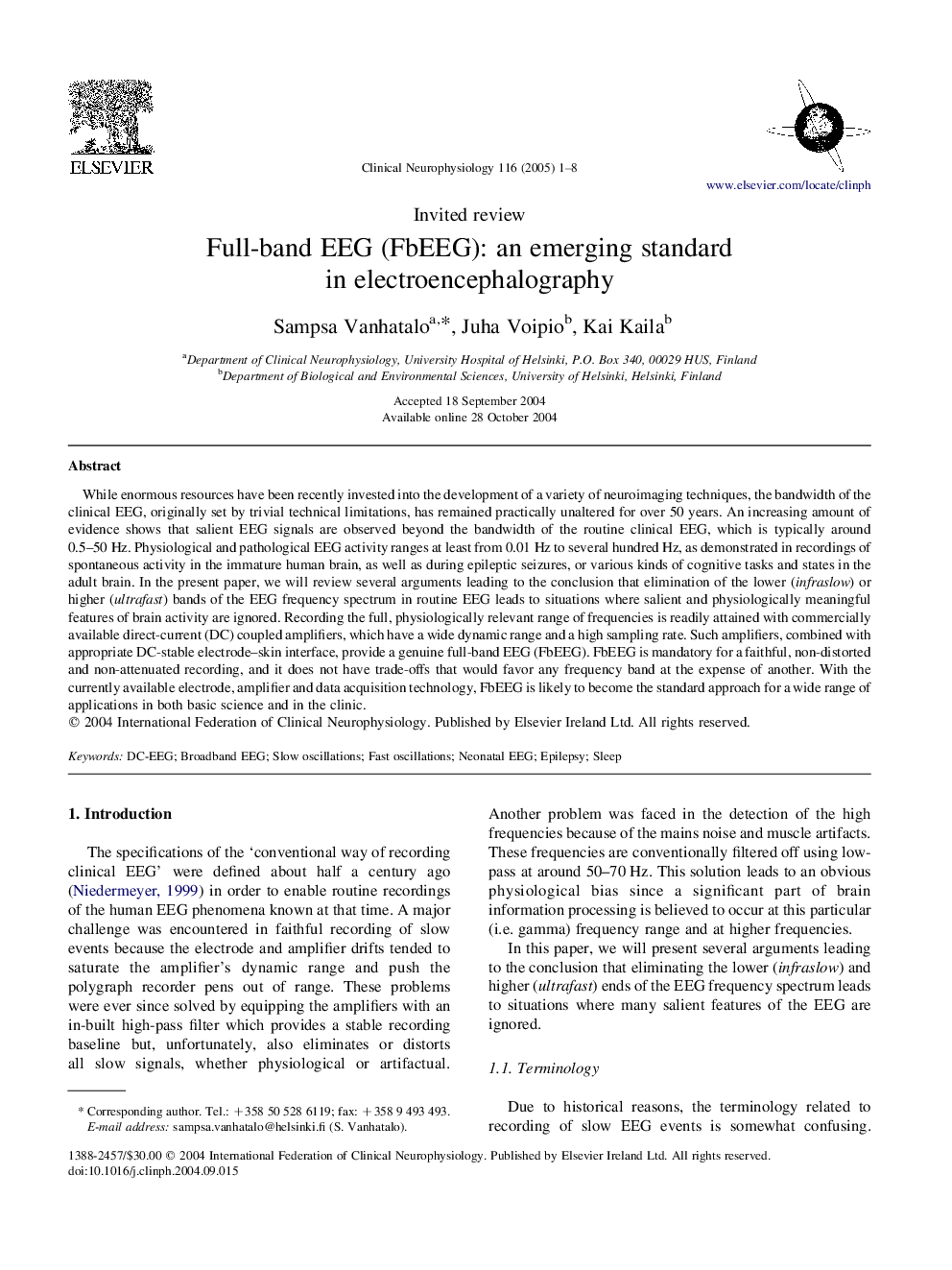| Article ID | Journal | Published Year | Pages | File Type |
|---|---|---|---|---|
| 9188846 | Clinical Neurophysiology | 2005 | 8 Pages |
Abstract
While enormous resources have been recently invested into the development of a variety of neuroimaging techniques, the bandwidth of the clinical EEG, originally set by trivial technical limitations, has remained practically unaltered for over 50 years. An increasing amount of evidence shows that salient EEG signals are observed beyond the bandwidth of the routine clinical EEG, which is typically around 0.5-50Â Hz. Physiological and pathological EEG activity ranges at least from 0.01Â Hz to several hundred Hz, as demonstrated in recordings of spontaneous activity in the immature human brain, as well as during epileptic seizures, or various kinds of cognitive tasks and states in the adult brain. In the present paper, we will review several arguments leading to the conclusion that elimination of the lower (infraslow) or higher (ultrafast) bands of the EEG frequency spectrum in routine EEG leads to situations where salient and physiologically meaningful features of brain activity are ignored. Recording the full, physiologically relevant range of frequencies is readily attained with commercially available direct-current (DC) coupled amplifiers, which have a wide dynamic range and a high sampling rate. Such amplifiers, combined with appropriate DC-stable electrode-skin interface, provide a genuine full-band EEG (FbEEG). FbEEG is mandatory for a faithful, non-distorted and non-attenuated recording, and it does not have trade-offs that would favor any frequency band at the expense of another. With the currently available electrode, amplifier and data acquisition technology, FbEEG is likely to become the standard approach for a wide range of applications in both basic science and in the clinic.
Related Topics
Life Sciences
Neuroscience
Neurology
Authors
Sampsa Vanhatalo, Juha Voipio, Kai Kaila,
